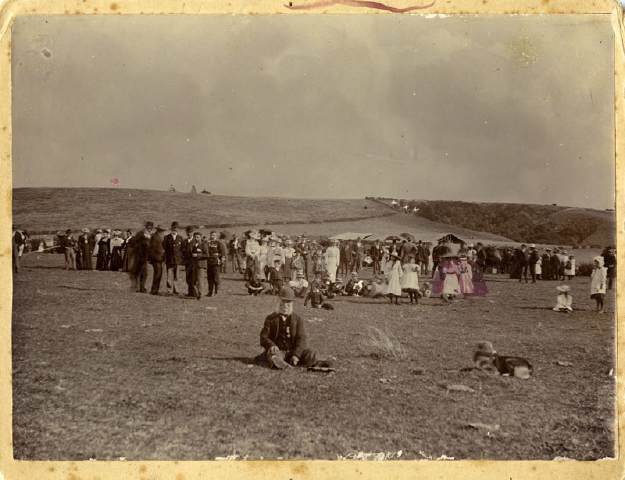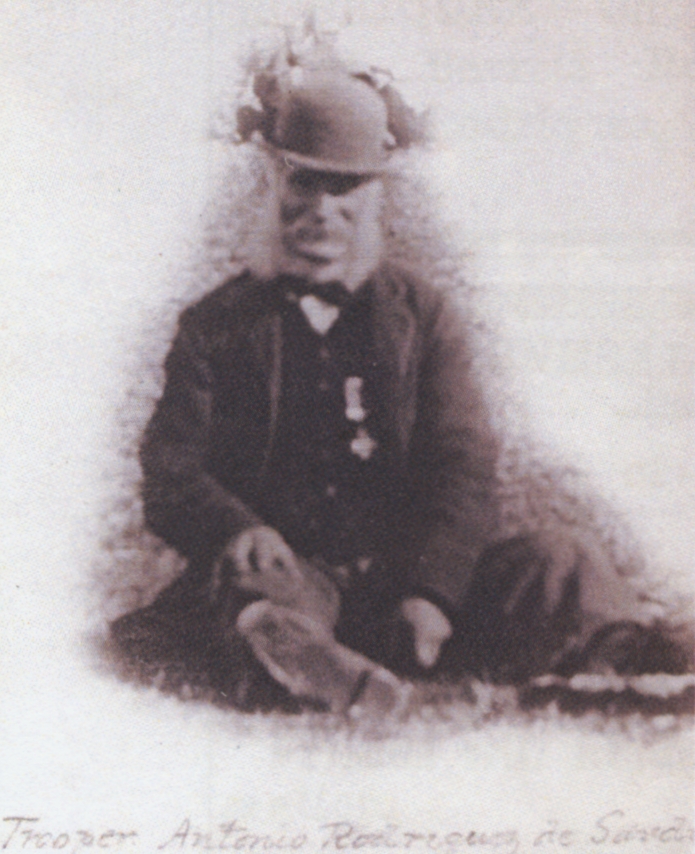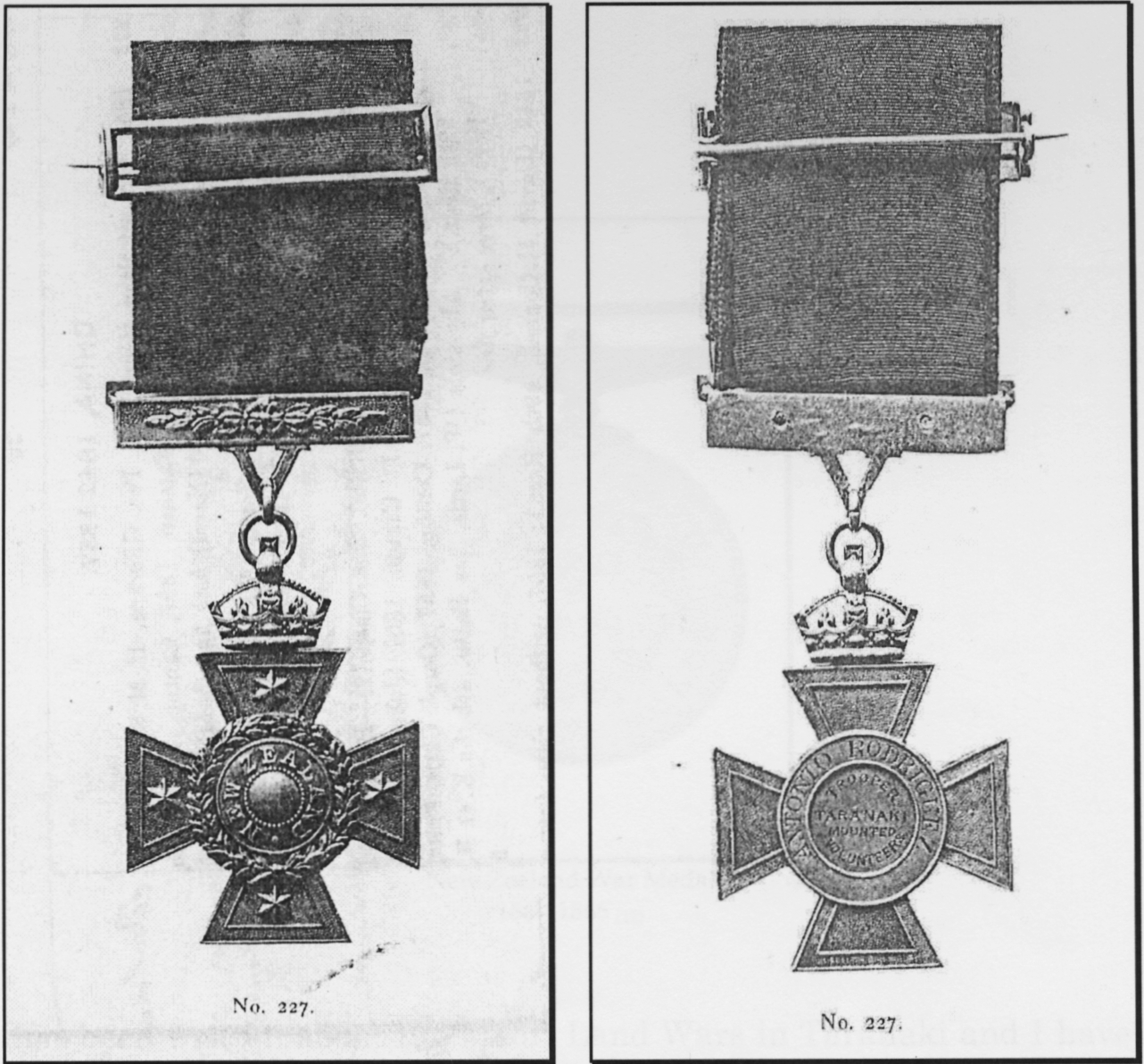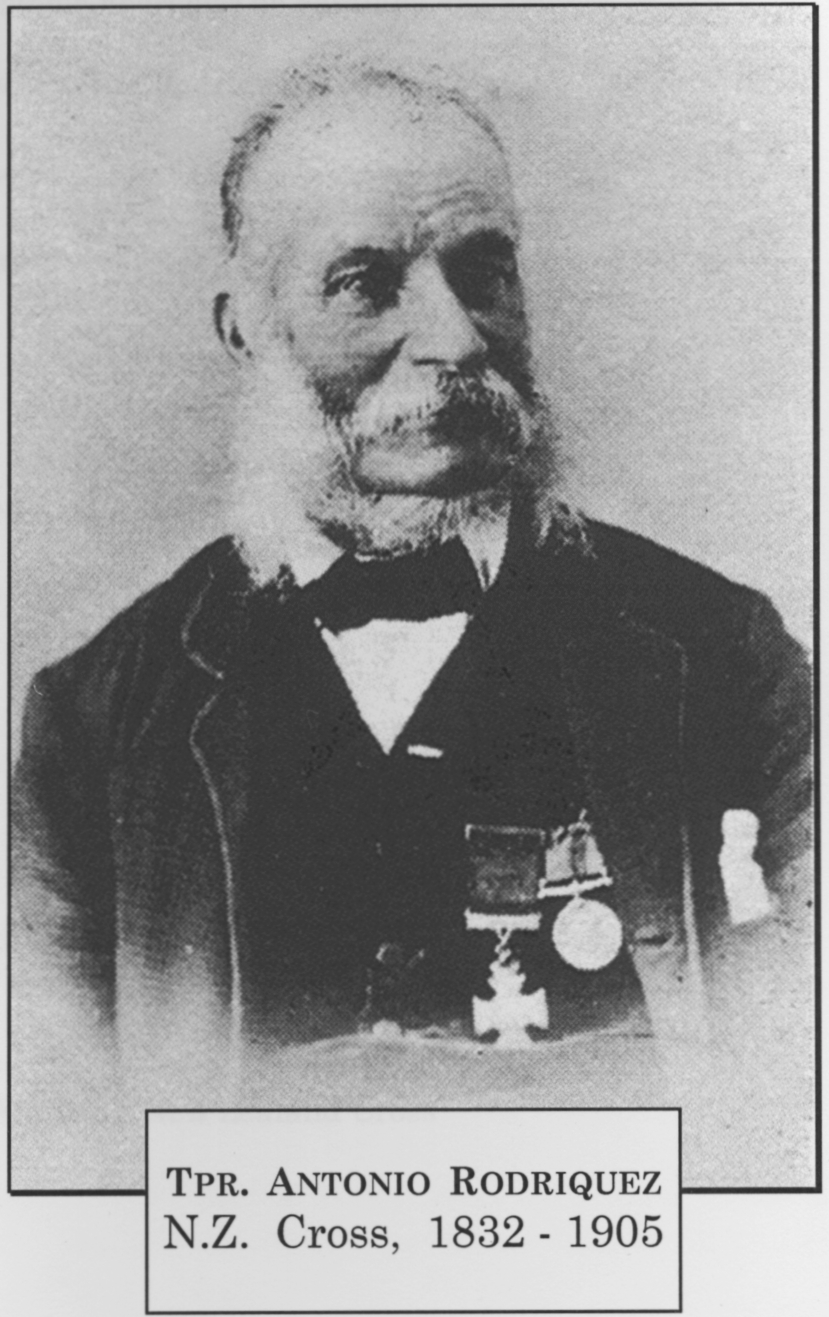Rodriquez and Mace were presented with their medals together on 23 January 1877. The award was followed the next year with a grant, to all New Zealand Cross holders, of a pension of £10 annually for life, which was no small thing at that time. New Plymouth newspapers continued to notice Rodriquez in the years that followed: he acquired a particular reputation as the provider of tea and coffee at local dances. The last report of him before his death is in an article in the Taranaki Herald from March 1902, about a gathering on the site of the Battle of Waireka to commemorate its fortieth anniversary. Rodriquez was present, and the last known picture of him was taken there, seated on the turf where he had ridden through gunfire forty years before, wearing his New Zealand Cross.

Close-up of Antonio Rodriquez at the Waireka gathering, March 1902, from Puke Ariki, New Plymouth, used with their kind permission

Close-up of Antonio Rodriquez at the Waireka gathering, March 1902
Rodriquez was found dead at his home on 12 May 1905, apparently from the effects of dropsy and heart disease which he had lately suffered. He was 73. His funeral was small but his death was widely reported, not just as a New Zealand Cross winner and war hero but also as one of the few surviving 'old pioneers' from the country's earliest colonization by the British. His immediate heirs do not appear to have been as solicitous of this reputation as those writers, however, as a rather waspish note in the Taranaki Herald for 16 January 1908 reveals that somehow, Rodriquez's New Zealand Cross had by then already been sold:
"A correspondent calls attention to a paragraph in the New Zealand Herald stating that a New Zealand Cross was sold by auction in London on November 9th 1907 for £170.... This will be an interesting item to the person who for a paltry sum of £20 parted with the Cross issued to Trooper Antonio Rodriquez, of the Taranaki Mounted Volunteers. Many members of the old corps were much annoyed at the time to learn that the Cross had been sent out of the country, and would willingly have subscribed the amount to keep it in the place where it was won."
It would seem that money had been short in the Rodriquez family, but the Herald, clearly aware of the identity of the seller as would most of the readers have been, did not choose to name them for us. Whatever the cause of their sale, the beneficiary seems to have been an Irish collector by the name of Robert Day, whose collection was subsequently sold at Sotheby's in London on 18 and 19 April 1910. The Cross was bought by the London dealers Spinks for £235. (The Taranaki Herald reported this, without any satisfaction, on 3 May 1910.) Spinks appear to have subsequently sold the Cross to another collector by the name of Hamilton Smith, which is known from the subsequent sale of his collection at the auction house of Glendining's in London on 20 and 21 July 1927. On that occasion the medal earnt less, and the London dealers Baldwin & Son were able to acquire it for £96. They appear however to have been acting as agents for none other than Lester Watson, whose own notes record the medal as having been purchased by him at that auction. The Cross, therefore, having come from New Zealand to London, now continued around the world to the USA.

Illustration of Rodriquez's New Zealand Cross from the auction catalogue of the Sotheby's sale of 1910
Once in the possession of Lester Watson, Rodriquez's Cross shared the fate of the rest of the collection; inherited by Mr L. Hoyt Watson and his siblings in 1959, it was gifted to Cambridge in America in 2005 and then placed on loan to the Fitzwilliam Museum in 2006 and exhibited, and placed online, as part of the Museum's Imagery of War exhibition. The medal's appearance online, of course, made it available in a way that it had not been before, and as with many other items in the Watson Collection, drew enquiries to the Museum from relatives of the recipient. What was unexpected was firstly that three different researchers who could claim kinship with Rodriquez would contact us, and secondly, that none would be aware of either of the others! Ironically, this arose principally because of the separation of himself and his wife, which left parts of the family out of communication with each other until their separate discoveries of his medal. Rodriquez himself has thus managed, through his heroism and horsemanship over several months of 1863 and 1864, to bring his family back together after a separation of 140 years. There are many reasons for the award of medals for gallantry, but this unexpected result may be one of the more enduring.

Antonio Rodriquez, c. 1892, wearing his New Zealand Cross and New Zealand Medal, here from Ted Andrews, Kiwi Trooper: the story of Queen Alexandra's Own (Wanganui 1968) via Gail Lesuma